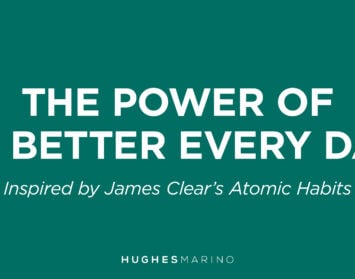Owning office and industrial properties is not for the faint of heart
By John Jarvis
When I was an economics major at the University of California, Santa Barbara, I remember my first introduction to the concept of risk and return. A simple graph presented in Econ 101 represented the potential for increasing returns commensurate with increasing risk, up and to the right as far as your nerves can handle it. And down to the left, at the point at which the curve crosses the y-axis, the point representing zero risk, was marked on the graph as 4%. It is quite hard to actually find an investment with zero risk, especially if you consider for inflation, but if you could, my econ textbook in 1982 said that the risk-free rate of return would be approximately 4%.

Well, the world has gotten a bit more complicated since then, and the risk-free rate of return in 2020 is more likely zero or perhaps a negative number. And here is my point–real estate has always been and always will be an investment with significant risks. It’s just that we all seem to have forgotten this over the course of the longest commercial real estate bull run in our lifetimes, starting with the end of the 2008 Financial Crisis and booming away until the Flash-Crash-COVID-Collapse in March 2020.
Throughout this recent twelve-year expansion cycle, landlords were continually improving their position. First, they took away the market concessions that had swelled (as they always do) during the preceding soft market. Gradually, landlords stopped offering free rent, adequate tenant improvement allowances, moving allowances and other incentives for signed transactions. Then they started raising rents and kept on going to unprecedented levels. Then, with rents at all-time highs, landlords figured out that in addition to boosting their net operating income (and hence their returns), they could also take further advantage of their leverage to minimize their risk. They did this by pushing longer term leases, and by requiring enhanced security deposits and letters of credit. At the tail end of this last boom cycle, owning a Class A office tower was indeed starting to look like a risk-free investment, and the risk-free rate of return was something on the order of 12-16%! Which inevitably lured in all manner of pension funds and other typically risk-averse investors’ capital.
Except real estate is not a risk-free investment. Markets turn. Tenants default. And sometimes tenants, given the opportunity, will simply seek to renegotiate their existing lease terms. Nobody needs to take this personally. This is not about ethics, it’s about business, and it’s about leverage. If landlords are crying foul it is only because they had forgotten that owning real estate is not a risk-free gambit.
Welcome back to the world of risk and return.
It is interesting to note that, as of today, the commercial property owner’s risk profile is increasing while their investment returns are declining. How can that be? Wouldn’t this represent an inverted risk/return curve? I say no, rather, it is simply an overnight reckoning, and a spontaneous recalibration and correction of the risk/return curve, as we are reminded that owning commercial real estate is not and never was without risk.
Commercial property owners who are not overextended with debt should be able to survive this crisis. For example, owners with loans no greater than 50-60% loan-to-value can afford to lower their rents today and meet the market where it is. The key is to quickly accept the new reality. Landlords need to steal themselves for hard times in the near term, and sign new deals at these lower rates, with shorter lease terms, and less than bullet-proof security. In the coming months savvy commercial property owners will shift to a hyper-focus on occupancy rather than the previously all-important financial returns.
The good news for property investors who successfully navigate this period? Those double-digit returns will be there for you again one day in the future as an appropriate reward for all the risk of real estate ownership.
But you can’t get there with empty buildings.
John Jarvis is an executive vice president of Hughes Marino, a global corporate real estate advisory firm that specializes in representing tenants and buyers. Contact John at 1-844-662-6635 or john@hughesmarino.com to learn more.









